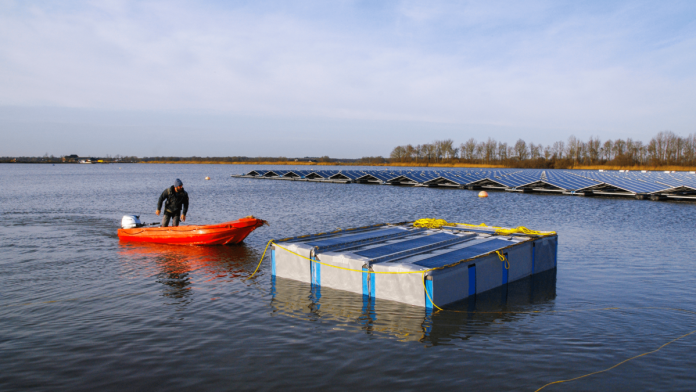Earlier this year, scientists led by European solar research institute Solliance began testing a floating thin-film solar array. The group announced this week that it has a 1,000 W test system up and running in the Dutch region of Weperpolder.
Though this test installation is on an inland body of water, the project’s aim is to develop a new concept for floating solar at sea. By working with flexible thin-film modules, the group hopes to develop a system that can follow the waves, rather than common approachesrelying on a more rigid structure.
Solliance has not provided further details on the thin-film technology used in the modules, but states that it has conducted bending and fatigue tests proving that they can withstand minor bends without damage.
And it has given little information on its approach to designing the flexible racking system, other than to say that it is “strong but flexible.” The institute also reports that a scale model of the system has been tested in wave conditions, proving its viability for use at sea.
Floating ambitions
The latest installation’s main goal, say the researchers, is to determine the optimal height and level of flexibility for the floating racking system. Late last year, Solliance also deployed another floating thin-film system on the North Sea near the Dutch town of Den Helder, which aims primarily to monitor the effects of algae growth, pollution, salt deposits and weather influences.
The system will be monitored, and its performance compared to that of a larger floating installation developed by Dutch company Groenleven, nearby on the same lake.
The next phase of Solliance’s Solar @ Sea project will involve the installation of a 50 kWp array on the coastal Oostvoornse lake, after which it expects to be ready to start to build pilot projects on the North Sea.






